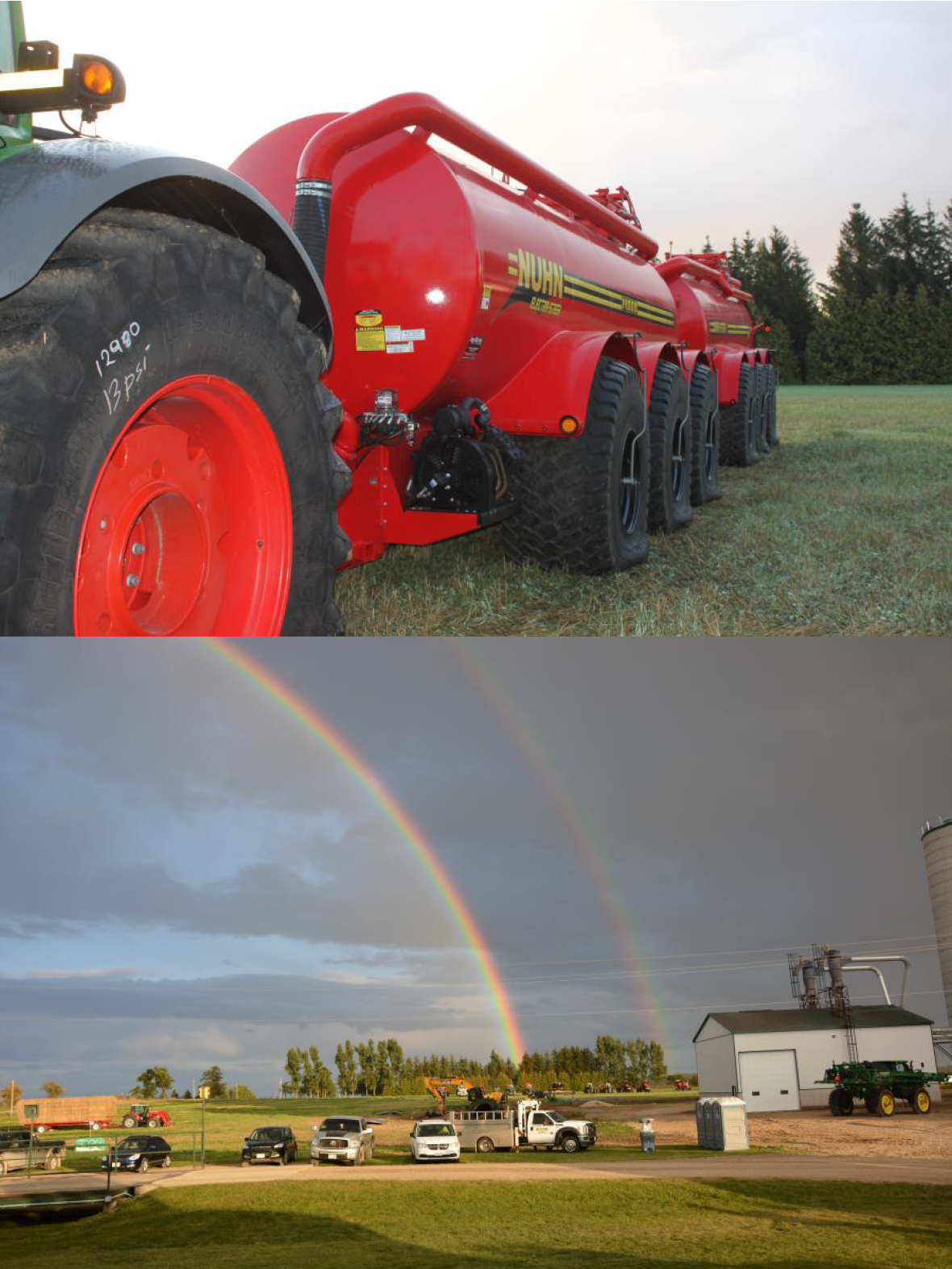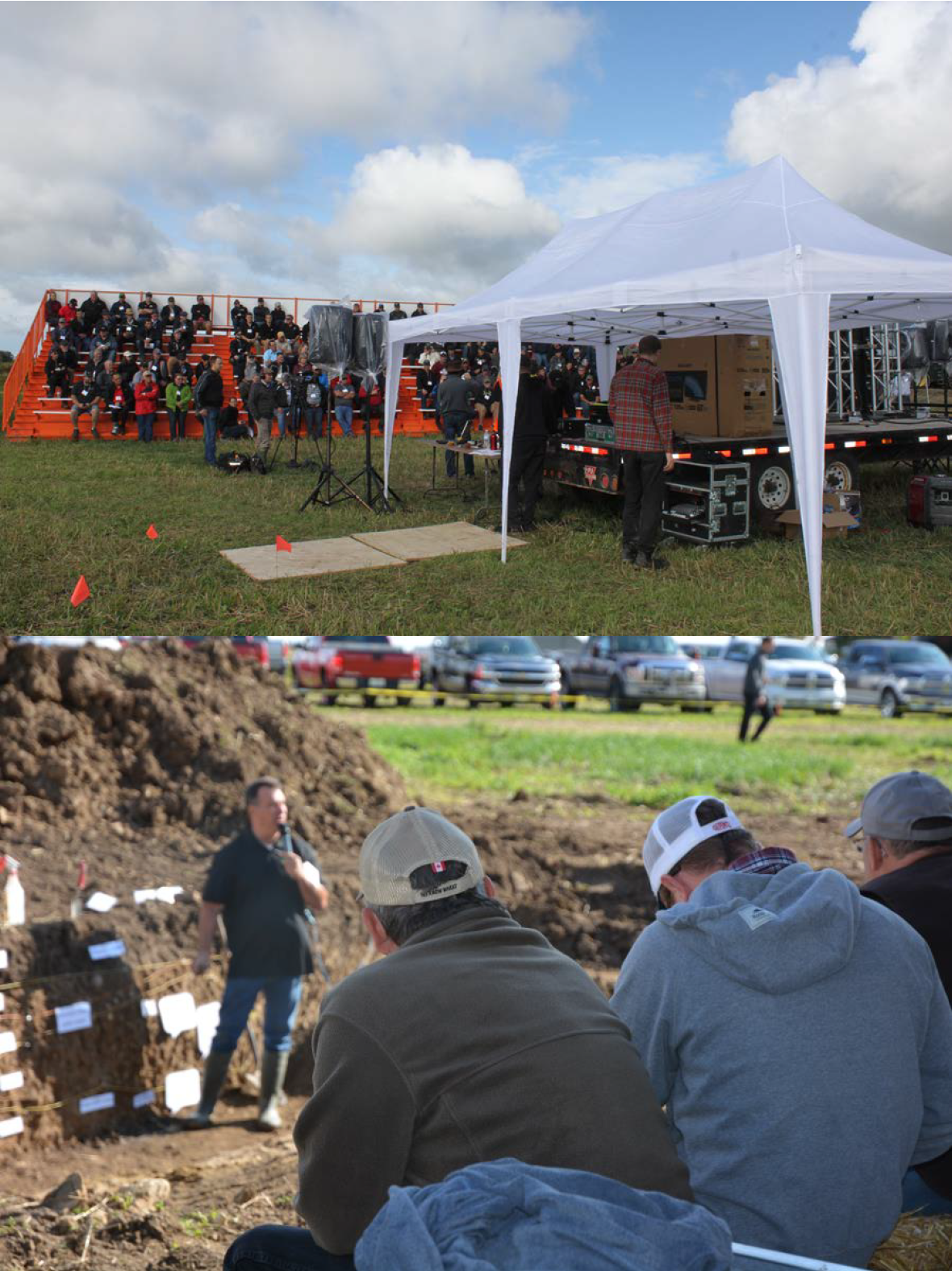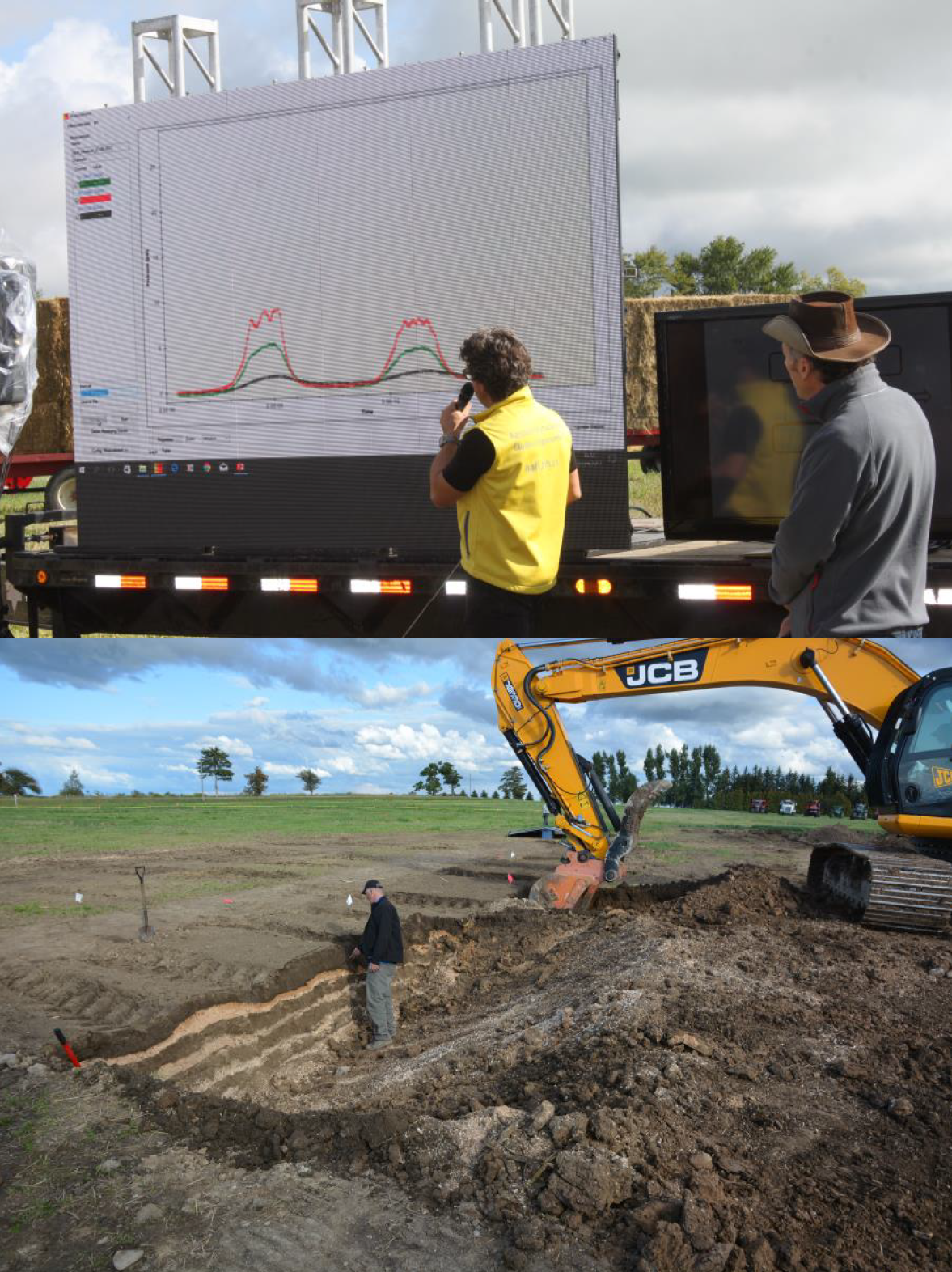Summary
The Innovative Farmers Association of Ontario hosted a major Compaction Event at Shawridge Elevators at Arthur Ontario on Thursday September 7th, 2017. OMAFRA staff collaborated with the IFAO Compaction Committee to put on a broad and interactive day.

The event involved a group presentation by Matthias Stettler of Bern University of Applied Sciences in Switzerland and then 4 stations in the field which explored:
- The impact of various configurations of farm equipment on soil compaction potential.
- A large soil pit which explored various aspects of soil properties and management that influence a soils risk and severity susceptivility to compaction
- A lasagna pit constructed of various layers of soil and sawdust to a depth of 4 feet which give a very visual look at the surface and subsurface impact of soil compaction resulting from various implements, in this case, combines, self propelled sprayers, and grain buggies
- A station exploring how we see compaction today with various sensors such as yield monitors, imagery, remote sensing, and how this sets us up for a future of “controlled traffic farming” to avoid as much soil compaction as we can.

The audience was exposed to lots of visual observation of how modern farm equipment is contributing to soil compaction as well as the way in which we have been treating our soils.
Some of the important take home messages from the day were that:
- All soils are susceptible to compaction
- The yield loss due to compaction can vary tremendously. The crop grown, site, soil,
- weather conditions, number of overruns (a single pass being less detrimental than
- multiple passes) and trafficked area (depending on working width, tire width etc.) all impact the actual outcome.
- The guidelines for yield loss are:
- single severe topsoil compaction: up to 15% for 1 to 3 years
- repeated severe topsoil compaction: 20% (permanent if management remains unchanged)
- repeated minor topsoil compaction: additive over time, up to 15% after several years (permanently if management remains unchanged)
- single severe subsoil compaction: 3% (may be permanent)
- repeated severe subsoil compaction: 5% (likely to be permanent
- Many other soil problems are also caused by compaction:
- increased erosion
- reduced fertilizer efficiency
- lower biological activity (leading to higher efforts for tillage)
- increased movement of nutrients and pesticides (due to damaged micropores) etc.

Data generated from the live demos and articles explaining soil compaction are available at www.ifao.com .
